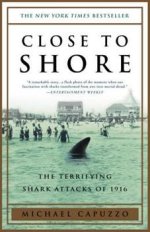I really miss that journal. It was well-written with interesting articles and stories.Mike Hurley and I did a few trips together, ADKs, Temagami, LaVerendrye. We got along well, what do they say, kindred spirits. He carried a lot of gear which he set up for photos to be used in his quarterly “Hurleys Journal”. He paddled a 15’ wood canvas Chemun, used a big heavy “campfire tent”, open with no floor, big heavy tripod for hanging a cast iron pot, guitar ( he only knew one song, “Mommas, don’t let your babies grow up to be Cowboys”). Nice guy, fond memories, we still keep in touch.
View attachment 132365View attachment 132366
-
Happy Halloween! 🎃🎂
You are using an out of date browser. It may not display this or other websites correctly.
You should upgrade or use an alternative browser.
You should upgrade or use an alternative browser.
What are you reading?
- Thread starter roadends
- Start date
I've been a steady reader for years but fell off the wagon about 6 months ago and can't seem to get back on. It prompted me to finally try audio books. What really brought this about was a road trip with a couple young boys so I found an audio book I thought would appeal to them and it was a hit so I decided to try for myself.
Animal Farm, which I've read a couple times previously, was good.
Fahrenheit 451, which I hadn't read before, was a disappointment and left me wondering if it was the book itself or just the reader that I didn't care for.
Heart of Darkness, which I've also read a couple times before, was fantastic. I enjoyed it more than reading the book for myself.
I've been listening on my way to/from work as well as on my lunch hour when I park on some vacant land I own while I eat and the dog sniffs around. I'll try some more titles and hope it continues to go well. I'm using a free App available from our local library so there is no cost involved. The only downside is limited titles available and having to wait in line for more popular ones.
Alan
Animal Farm, which I've read a couple times previously, was good.
Fahrenheit 451, which I hadn't read before, was a disappointment and left me wondering if it was the book itself or just the reader that I didn't care for.
Heart of Darkness, which I've also read a couple times before, was fantastic. I enjoyed it more than reading the book for myself.
I've been listening on my way to/from work as well as on my lunch hour when I park on some vacant land I own while I eat and the dog sniffs around. I'll try some more titles and hope it continues to go well. I'm using a free App available from our local library so there is no cost involved. The only downside is limited titles available and having to wait in line for more popular ones.
Alan
finally try audio books
I've never tried audio books. I can see their usefulness if you're driving or not in a position to read. But, comparatively, wouldn't reading be a lot faster than listening to reading?
I'm using a free App . . . . The only downside is limited titles available and having to wait in line for more popular ones.
Why would there be a waiting line for downloadable digital books? Just curious.
Having unlimited internet and limited phone data means I rely on YT for audio books. There's quite the variety to choose from. We often fire up the laptop in the front room whilst sitting in the kitchen with the bluetooth speaker cooking, eating supper well into the evening.
We used to love radio plays many years ago but that seems to be extinct. My son has recommended trying podcasts but I much prefer stories. Currently my wife and I enjoy easy listening like James Herriot or detective stuff such as M.C.Beaton or the Inspector Maigret series, also there's mysteries on Bitesized Audio Classics. However a favourite story genre of mine (not hers) is gothic horror, kinda like spooky ghost stories from the past. No blood and guts with chainsaws stuff (lol), just mystery and suspense, by authors Arthur Conan Doyle and M.R. James etc.
Here's a shortlist of my favourites:
HorrorBabble - https://www.youtube.com/channel/UCIvp_SM7UrKuFgR3W77fWcg
Encrypted Horror - https://www.youtube.com/c/EnCryptedClassicHorror/videos
Classic Ghost Stories Podcasts - https://www.youtube.com/c/TonyWalker2021/videos
Bitesized Audio Classics - https://www.youtube.com/c/BitesizedAudioClassics/videos
I enjoy Tony Walker's channel for the story content (he also writes) but also for his post reading discussion of everything under the sun from story lines and tropes to the author, his own thoughts on story ideas etc. It feels like being a member of a book club. I like that.
We used to love radio plays many years ago but that seems to be extinct. My son has recommended trying podcasts but I much prefer stories. Currently my wife and I enjoy easy listening like James Herriot or detective stuff such as M.C.Beaton or the Inspector Maigret series, also there's mysteries on Bitesized Audio Classics. However a favourite story genre of mine (not hers) is gothic horror, kinda like spooky ghost stories from the past. No blood and guts with chainsaws stuff (lol), just mystery and suspense, by authors Arthur Conan Doyle and M.R. James etc.
Here's a shortlist of my favourites:
HorrorBabble - https://www.youtube.com/channel/UCIvp_SM7UrKuFgR3W77fWcg
Encrypted Horror - https://www.youtube.com/c/EnCryptedClassicHorror/videos
Classic Ghost Stories Podcasts - https://www.youtube.com/c/TonyWalker2021/videos
Bitesized Audio Classics - https://www.youtube.com/c/BitesizedAudioClassics/videos
I enjoy Tony Walker's channel for the story content (he also writes) but also for his post reading discussion of everything under the sun from story lines and tropes to the author, his own thoughts on story ideas etc. It feels like being a member of a book club. I like that.
Last edited:
Aside from occasional evening audios I/we devour books in our spare time. Usually I stockpile books for the long winter nights but I haven't been able to hide them well enough. I'll need to revisit Sarum by Edward Rutherford as it was a long thorough dive into the history of Salisbury (England); reading like an epic novel but packed with so much detail going beyond the anecdotal. Language, customs, economies, architecture, religion(s), politics etc. I'm halfway thru Pickwick Papers by Charles Dickens. A heavy volume filled with stories within stories. His wry, biting, satirical humour is timeless. I'm 2 books into the Rivers Of London series by Ben Aaronovitch, which is a very adult mix of murder detective and Harry Potter type fantasy. Blood and sex, gore and wizardry, told by a Londoner full of inside jokery of and about that part of the world. I crash read The Commitments by Roddy Doyle the other night. Fun heady stuff about a collection of good-fer-nothings who are herded together to form a band; their manager insists they delve into the heart of good ol' rock n' roll - soul music. Of course like all good things it doesn't last, but what a ride!! Ha. It's been hit and miss finding books in the "Chocolat" series by Joanne Harris, about the sometimes mystic goings on in a small French village, so far The Strawberry Thief, Peaches For Monsieur Le Cure. They won't last till winter. One that will is Vesper Flights by Helen Macdonald. I'll read it together with her H is For Hawk.
Last edited:
It's because it's through the library system. They're only allotted a certain number of digital copies of each book.Why would there be a waiting line for downloadable digital books? Just curious.
Alan
 From the publisher: A beautifully woven travel narrative describing the river adventures undertaken by Alan Kesselheim's family to recognize and celebrate the coming of age of each of his three children. The rivers paddled include the Kazan River in Nunavut, Canada, the Yellowstone River in Montana, and the Rio Grande in Texas and Mexico.
From the publisher: A beautifully woven travel narrative describing the river adventures undertaken by Alan Kesselheim's family to recognize and celebrate the coming of age of each of his three children. The rivers paddled include the Kazan River in Nunavut, Canada, the Yellowstone River in Montana, and the Rio Grande in Texas and Mexico.From me: If you have children or not, this is a well written piece of travel literature in which Kesselheim memorializes his children, wife and way of life. Well worth the read.
Andrés Reséndez, Conquering the Pacific: An Unknown Mariner and the Final Great Voyage of the Age of Discovery.
The story of an uncovered voyage as colorful and momentous as any on record for the Age of Discovery—and of the Black mariner whose stunning accomplishment has been until now lost to history
It began with a secret mission, no expenses spared. Spain, plotting to break Portugal’s monopoly trade with the fabled Orient, set sail from a hidden Mexican port to cross the Pacific—and then, critically, to attempt the never-before-accomplished return, the vuelta. Four ships set out from Navidad, each one carrying a dream team of navigators. The smallest ship, guided by seaman Lope Martín, a mulatto who had risen through the ranks to become one of the most qualified pilots of the era, soon pulled far ahead and became mysteriously lost from the fleet. It was the beginning of a voyage of epic scope, featuring mutiny, murderous encounters with Pacific islanders, astonishing physical hardships—and at last a triumphant return to the New World. But the pilot of the fleet’s flagship, the Augustine friar mariner Andrés de Urdaneta, later caught up with Martín to achieve the vuelta as well. It was he who now basked in glory, while Lope Martín was secretly sentenced to be hanged by the Spanish crown as repayment for his services. Acclaimed historian Andrés Reséndez, through brilliant scholarship and riveting storytelling—including an astonishing outcome for the resilient Lope Martín--sets the record straight.
https://www.harperacademic.com/book/...g-the-pacific/
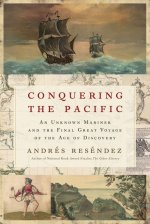
Diana Preston, Paradise in Chains: The Bounty Mutiny and the Founding of Australia.
Celebrated historian Diana Preston presents betrayals, escapes, and survival at sea in her account of the mutiny of the Bounty and the flight of convicts from the Australian penal colony.
The story of the mutiny of the Bounty and William Bligh and his men's survival on the open ocean for 48 days and 3,618 miles has become the stuff of legend. But few realize that Bligh's escape across the seas was not the only open-boat journey in that era of British exploration and colonization. Indeed, 9 convicts from the Australian penal colony, led by Mary Bryant, also traveled 3,250 miles across the open ocean and some uncharted seas to land at the same port Bligh had reached only months before.
In this meticulously researched dual narrative of survival, acclaimed historian Diana Preston provides the background and context to explain the thrilling open-boat voyages each party survived and the Pacific Island nations each encountered on their journey to safety. Through this deep-dive, readers come to understand the Pacific Islands as they were and as they were perceived, and how these seemingly utopian lands became a place where mutineers, convicts, and eventually the natives themselves, were chained.
The book also tells of the HMS Pandora, which was sent to bring the Bounty mutineers to justice. Fourteen of the mutineers were arrested in Tahiti, to be returned to England for court martial. Pandora wrecked on the Great Barrier Reef on 29 August 1791. Four mutineers and 31 crew were lost. The survivors of the wreck made another incredible small boat journey, sailing 1200 nautical miles to what is now Indonesia.
https://www.barnesandnoble.com/w/par...ton/1125504800
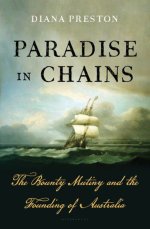
P.V. Glob, The Bog People: Iron-Age Man Preserved. New York: New York Review of Books (2004).
Judging from this book alone, ancient Denmark must have been a pretty creepy place. From time to time, workers harvesting peat for fuel have come across bodies buried in the peat bogs. The workers often suspected that their finds were murder victims and called the police. Noted archaeologist P.V. Blog explains that they were in fact human sacrifices to the ancient fertility goddess. The acidic and anaerobic environment of the bogs preserved the corpses in remarkable detail; in some cases legible fingerprints could be taken. The book provides insights into the religion and daily lives of prehistoric Danes.
Tollund Man, perhaps the best known bog person, is preserved in a Danish museum.
https://www.museumsilkeborg.dk/the-l...ut-tollund-man
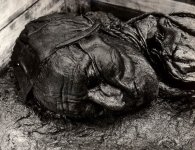
The story of an uncovered voyage as colorful and momentous as any on record for the Age of Discovery—and of the Black mariner whose stunning accomplishment has been until now lost to history
It began with a secret mission, no expenses spared. Spain, plotting to break Portugal’s monopoly trade with the fabled Orient, set sail from a hidden Mexican port to cross the Pacific—and then, critically, to attempt the never-before-accomplished return, the vuelta. Four ships set out from Navidad, each one carrying a dream team of navigators. The smallest ship, guided by seaman Lope Martín, a mulatto who had risen through the ranks to become one of the most qualified pilots of the era, soon pulled far ahead and became mysteriously lost from the fleet. It was the beginning of a voyage of epic scope, featuring mutiny, murderous encounters with Pacific islanders, astonishing physical hardships—and at last a triumphant return to the New World. But the pilot of the fleet’s flagship, the Augustine friar mariner Andrés de Urdaneta, later caught up with Martín to achieve the vuelta as well. It was he who now basked in glory, while Lope Martín was secretly sentenced to be hanged by the Spanish crown as repayment for his services. Acclaimed historian Andrés Reséndez, through brilliant scholarship and riveting storytelling—including an astonishing outcome for the resilient Lope Martín--sets the record straight.
https://www.harperacademic.com/book/...g-the-pacific/

Diana Preston, Paradise in Chains: The Bounty Mutiny and the Founding of Australia.
Celebrated historian Diana Preston presents betrayals, escapes, and survival at sea in her account of the mutiny of the Bounty and the flight of convicts from the Australian penal colony.
The story of the mutiny of the Bounty and William Bligh and his men's survival on the open ocean for 48 days and 3,618 miles has become the stuff of legend. But few realize that Bligh's escape across the seas was not the only open-boat journey in that era of British exploration and colonization. Indeed, 9 convicts from the Australian penal colony, led by Mary Bryant, also traveled 3,250 miles across the open ocean and some uncharted seas to land at the same port Bligh had reached only months before.
In this meticulously researched dual narrative of survival, acclaimed historian Diana Preston provides the background and context to explain the thrilling open-boat voyages each party survived and the Pacific Island nations each encountered on their journey to safety. Through this deep-dive, readers come to understand the Pacific Islands as they were and as they were perceived, and how these seemingly utopian lands became a place where mutineers, convicts, and eventually the natives themselves, were chained.
The book also tells of the HMS Pandora, which was sent to bring the Bounty mutineers to justice. Fourteen of the mutineers were arrested in Tahiti, to be returned to England for court martial. Pandora wrecked on the Great Barrier Reef on 29 August 1791. Four mutineers and 31 crew were lost. The survivors of the wreck made another incredible small boat journey, sailing 1200 nautical miles to what is now Indonesia.
https://www.barnesandnoble.com/w/par...ton/1125504800

P.V. Glob, The Bog People: Iron-Age Man Preserved. New York: New York Review of Books (2004).
Judging from this book alone, ancient Denmark must have been a pretty creepy place. From time to time, workers harvesting peat for fuel have come across bodies buried in the peat bogs. The workers often suspected that their finds were murder victims and called the police. Noted archaeologist P.V. Blog explains that they were in fact human sacrifices to the ancient fertility goddess. The acidic and anaerobic environment of the bogs preserved the corpses in remarkable detail; in some cases legible fingerprints could be taken. The book provides insights into the religion and daily lives of prehistoric Danes.
Tollund Man, perhaps the best known bog person, is preserved in a Danish museum.
https://www.museumsilkeborg.dk/the-l...ut-tollund-man

Winter is coming and if you're looking for an excellent book to read try the true story, "Born to Be Hanged": 'The Epic Story of the Gentlemen Pirates Who Raided the South Seas, Rescued a Princess, and Stole a Fortune by Keith Thomson.'
I listened to this book on my way back from GA. This crew is the 'Honey Badgers' of pirates. It didn't matter 5 or 6 to one they still went on the offensive. It's a story of unbelievable endurance and they had me when they took on a Spanish ship from CANOES in open water and won!
I listened to this book on my way back from GA. This crew is the 'Honey Badgers' of pirates. It didn't matter 5 or 6 to one they still went on the offensive. It's a story of unbelievable endurance and they had me when they took on a Spanish ship from CANOES in open water and won!
Reading “Adirondack French Louie”, early life in the north woods by Harvey L. Dunham at the moment. Some Adirondack history of the early days.
Tumpline, welcome to site membership! Feel free to ask any questions and to post messages, photos and videos in our many forums. Please read Welcome to CanoeTripping and Site Rules! Also, please consider adding your location to your profile, which will cause it to show under your avatar, as this is in many ways a geographic sport. We look forward to your participation in our canoe community.
I'm alternating between a few books:
Spent an easy Saturday afternoon in Paris. (Ontario) She hit the Mary Maxim for more knitting supplies. I know what the g-kids are getting for Christmas from Grandma and Grandpa Claus, and it won't be toys. I ducked into my own favourite bookstore while she dove into a linen emporium. Later we met up in an Italian restaurant. Over some house wine and good food we shared our shopping delights. I can't remember what she showed me, coulda been burlap and gunpowder for all I know, I was already lost in my books.
The Front Page...100 Years of Port Dover News. (Out of print.)
This will be a Christmas gift for a friend's 95 yr old mum. She grew up in that Lake Erie village and has roots that reach deep and distant. I wonder how many headlines she'll remember having witnessed firsthand?
Bush Runner, The Adventures of Pierre-Esprit Radisson. by Mark Bourrie.
This, and many other excellent books, have been suggested here on CT. This particular title has been on my Must Have list for some time now. Green Heron Books is a tiny Paris shop packed full of gently used books. I just happened to gaze upwards whilst standing at the front desk and there it was. Score!
Thank you to all you Canoetripping readers who share your books here in this thread.
The Front Page...100 Years of Port Dover News. (Out of print.)
This will be a Christmas gift for a friend's 95 yr old mum. She grew up in that Lake Erie village and has roots that reach deep and distant. I wonder how many headlines she'll remember having witnessed firsthand?
Bush Runner, The Adventures of Pierre-Esprit Radisson. by Mark Bourrie.
This, and many other excellent books, have been suggested here on CT. This particular title has been on my Must Have list for some time now. Green Heron Books is a tiny Paris shop packed full of gently used books. I just happened to gaze upwards whilst standing at the front desk and there it was. Score!
Thank you to all you Canoetripping readers who share your books here in this thread.
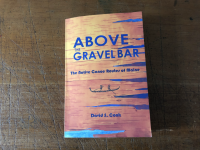
I got this to research a potential canoe route incorporating part of the Allagash Waterway in Maine. The potential route includes big lakes, the notorious Mud Pond Carry, and, diverting from Churchill Lake to the east, what appears to be tiny creeks with extensive blowdown- lots of dragging or carrying at stream side on this part of the route. About 75 miles length roughly. In the so-called Thorofare between Chase Lake and Munsungan Lake there is apparently a source for, and workplace to refine red Chert; a flint-like rock used by PaleoIndians to make arrowheads, scrapers, etc. which have been found all over New England.
Rather than a simple route index, this book explores the geology, geography, history, and ethnohistory of the Penobscot people in Maine. Very interesting so far.
Last edited:
Always more than one book at a time. Canoe book right now is Alone in the Caribbean by Fenger.
We can't read canoe books all the time.
Ralph H. Blum and Mark Scholz, MD. Invasion of the Prostate Snatchers: No more unnecessary biopsies, radical treatment, or loss of sexual potency. New York: Other Press (2010)
Derek J. Lomas, MD and Paras H. Shah, MD. Mayo Clinic on Prostate Health, 3rd edition: Answers to questions about prostate enlargement, inflammation, and cancer. Rochester, MN: Mayo Clinic Press (2022)
Invasion of the Prostate Snatchers gets my vote as one of the most attention-grabbing titles of all time. The Mayo Clinic book is up to date, explores the topic in greater depth, and is a frank and somber medical text for the popular reader. It has lots of pictures, which always help me understand. Mayo Clinic has definitely published the more helpful book.
Millions of men are diagnosed every year with prostate disease, some of it cancerous. Prostate cancer is the leading cause of cancer among American males. In the words of one physician quoted in Prostate Snatchers, "If you are over 70 and don't have prostate cancer, chances are you're a woman."
In the past this form of cancer had a high mortality rate, and the treatments had high rates of morbidity. An elevated level of Prostate Specific Antigen (PSA) led to a biopsy, which often was painful. If cancer was detected, the standard treatment was a radical prostatectomy. This surgery frequently left the patient sexually impotent, and with bladder and/or bowel incontinence.
Modern advances in diagnosis and treatment have changed this picture. The patient is subjected to fewer invasive procedures, and the side effects have been reduced. In fact, doctors have recognized that most prostate cancers grow slowly, making careful monitoring alone a viable strategy for some patients. It's a cancer guys may die with, but not die from.
So, guys, don't neglect this troublesome little plumbing fixture. Get it checked regularly, but make sure you have an up-to-date doctor who is not mired in Stone Age diagnostic and treatment procedures.
Ralph H. Blum and Mark Scholz, MD. Invasion of the Prostate Snatchers: No more unnecessary biopsies, radical treatment, or loss of sexual potency. New York: Other Press (2010)
Derek J. Lomas, MD and Paras H. Shah, MD. Mayo Clinic on Prostate Health, 3rd edition: Answers to questions about prostate enlargement, inflammation, and cancer. Rochester, MN: Mayo Clinic Press (2022)
Invasion of the Prostate Snatchers gets my vote as one of the most attention-grabbing titles of all time. The Mayo Clinic book is up to date, explores the topic in greater depth, and is a frank and somber medical text for the popular reader. It has lots of pictures, which always help me understand. Mayo Clinic has definitely published the more helpful book.
Millions of men are diagnosed every year with prostate disease, some of it cancerous. Prostate cancer is the leading cause of cancer among American males. In the words of one physician quoted in Prostate Snatchers, "If you are over 70 and don't have prostate cancer, chances are you're a woman."
In the past this form of cancer had a high mortality rate, and the treatments had high rates of morbidity. An elevated level of Prostate Specific Antigen (PSA) led to a biopsy, which often was painful. If cancer was detected, the standard treatment was a radical prostatectomy. This surgery frequently left the patient sexually impotent, and with bladder and/or bowel incontinence.
Modern advances in diagnosis and treatment have changed this picture. The patient is subjected to fewer invasive procedures, and the side effects have been reduced. In fact, doctors have recognized that most prostate cancers grow slowly, making careful monitoring alone a viable strategy for some patients. It's a cancer guys may die with, but not die from.
So, guys, don't neglect this troublesome little plumbing fixture. Get it checked regularly, but make sure you have an up-to-date doctor who is not mired in Stone Age diagnostic and treatment procedures.
True North: A Journey into Unexplored Wilderness A Memoir by Elliott Merrick
I just finished, "Finding the Mother Tree", by Suzanne Simard. I gotta say I look at the woods differently now.
Fitz
Fitz
Similar threads
- Locked
- Replies
- 25
- Views
- 29K
- Replies
- 17
- Views
- 3K

